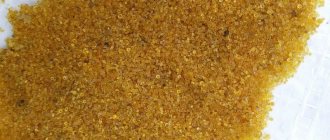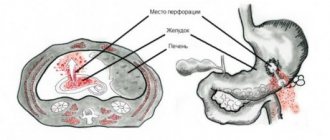Recently, you can increasingly see advertisements for products that reduce stomach acidity. From TV screens and advertising banners, people are encouraged to buy “magic” pills that will alleviate their condition. They are trying to convince them that increased stomach acidity is common, and it is very dangerous. And most people, believing advertising, purchase these medications at the slightest discomfort in the stomach.
But in fact, low stomach acidity is much more dangerous. Its symptoms can easily be confused by the average person with those described in advertising. Taking such drugs without a doctor's prescription can lead to dire consequences. Therefore, everyone who has problems with the gastrointestinal tract needs to know the symptoms of low stomach acidity, the characteristics of the disease and methods of treating it. And medications should be taken only after consulting a doctor.
How is the acidity of gastric juice determined?
Currently, the following methods are most often used to determine the acidity of gastric juice:
- Short-term intragastric pH-metry: a special probe is inserted into the patient’s stomach, with the help of which the acidity is determined. The study lasts several hours;
- Daily intragastric pH-metry: allows you to assess the production of hydrochloric acid during the day, including during the so-called “night breakthrough”, when hydrochloric acid begins to be actively produced by special cells of the stomach;
- Express pH-metry: carried out for 15-20 minutes in the same way;
- Endoscopic pH-metry: performed during an endoscopic examination, corresponds to the level of pH indicators during stimulated secretion.
How to determine stomach acidity?
Today, there are several ways to determine the acidity of gastric juice:
- The most physiological and reliable method is intragastric pHmetry, that is, when acidity is determined directly in the gastrointestinal tract. This is done using acidogastrometers, special devices with pH probes and sensors. This method can determine acidity in different areas of the stomach depending on the diagnostic task: Short-term - it lasts several hours
- Express - within 20 minutes
- Daily - acid production is assessed during the day
- Endoscopic - performed during endoscopic diagnosis.
Low stomach acidity is accompanied by the following diseases:
- Stomach cancer
- Anacidic gastritis or gastroduodenitis with low acidity are considered if the acidity in the body of the stomach is above 5pH. The most common cause of low acidity is atrophy of parietal cells, as well as a malfunction in their functioning.
Causes of low stomach acidity
Of course, the acidity of gastric juice will not decrease just like that, out of nowhere. This requires certain prerequisites. Such prerequisites include a number of diseases, such as:
- Gastroduodenitis;
- Gastritis;
- Stomach cancer.
All these diseases are inevitably accompanied by either disruption of the normal functioning of the glands that produce hydrochloric acid, or even their complete atrophy - in especially severe cases. Although, in fairness, it should be noted that it is very rare, but there are always cases when the acidity of the stomach decreases for no apparent reason.
Low acidity poses a very serious danger to human health, even if it is caused by banal gastritis. Normal gastric acidity ensures the protective function of the stomach, preventing various pathogenic microflora from entering the intestines. Accordingly, reduced stomach acidity provokes various intestinal infections and contributes to the development of severe inflammatory processes.
What is stomach acidity and why is it needed?
Gastric acidity is an indicator of a certain level of hydrochloric acid contained in the stomach; it is measured by pH units of gastric juice.
A certain level of acidity is very important for the normal digestion process. In order for food to be digested, enzymes are needed. One of them is pepsin, which works only in an acidic environment. Next, to move the contents of the stomach into the intestines and subsequent absorption of this content, you need to neutralize the acid. There are two areas of the stomach - the body and the fundus - where it is formed by parietal cells, and the antrum - where it is neutralized.
The work of the entire system is interconnected, so disruption of any of the processes leads to disturbances in the digestion of food in general. The consequence is that signs of stomach problems appear.
If there is a complete loss of parietal cells (their atrophy), a situation arises that leads to the development of irreversible processes.
Symptoms of low stomach acidity
The most typical symptom of low stomach acidity is putrid breath and belching that smells like a rotten egg.
Acid in the stomach has an antiseptic, bactericidal effect, and if there is a lack of acid in the gastric secretion, the protective mechanisms are significantly weakened, so microorganisms that change its microflora often enter the intestines of a person suffering from anacid gastritis. Therefore, intestinal disorders such as constipation or diarrhea are common symptoms of low stomach acid.
Persistent constipation can also be caused by decreased gastrointestinal motility due to lack of acid, and diet and various methods of dealing with constipation do not eliminate this disorder.
Fermentation processes in the intestines lead to pain from the accumulation of gases in the intestines, bloating, bloating, flatulence, and rumbling.
Incomplete digestion of proteins creates a concentration of breakdown products in the stomach, which have a toxic effect on the entire body, reducing immunity. And when the body’s resistance drops, various pathological processes begin in any organ or system, most often various mycoses progress - fungal infections of the mucous membranes, skin, nails, a person more often suffers from viral and other diseases, and oncological diseases may occur.
In addition to disrupting the process of protein breakdown, all vitamins and minerals also begin to be poorly absorbed in the intestines:
- Due to a lack of vitamins, hair becomes dry and brittle, nails peel and break, the skin of the hands and face becomes dry;
- Anemia - iron deficiency anemia is one of the indirect symptoms of low acidity in the stomach, in combination with atrophic gastritis is called Addison-Biermer disease. With autoimmune gastritis, B12-deficiency anemia develops;
- Acne and dilated blood vessels on the nose and cheeks also often accompany a decrease in stomach acidity.
One of the symptoms of low acidity is the presence of undigested food debris in the stool.
After eating, patients often feel a feeling of heaviness, fullness, heartburn, and sometimes a dull pain in the stomach immediately after eating or 20 minutes after.
When the concentration of acid in the stomach decreases, important enzymes such as pepsin remain inactive, therefore the process of protein digestion worsens or is significantly weakened. And this has a very negative effect on the entire body; an active fermentation process begins in the intestines.
Symptoms
Low acidity in the stomach and its symptoms are similar to other diseases of the digestive system. Main symptoms:
- after eating a person begins to experience stomach pain;
- belching and bad breath;
- the onset of heartburn;
- flatulence, hiccups;
- stomach upset.
If a patient experiences such signs, it is better to consult a doctor. Only he can correctly diagnose and prescribe treatment. If the acidity has decreased and the patient is diagnosed with diseases of the digestive system, high-quality treatment is necessary. If the disease is prolonged, serious consequences may develop.
Interesting! Conducting ph-metry of the stomach: indications and contraindications
People with low acidity most often experience signs of anemia:
- problems with hair begin, they become dull and dry;
- the skin becomes dry;
- nails become brittle and peel;
- There may be a rash or acne on the skin.
If a person does not monitor his health and is not treated, this can lead to the following consequences:
- Hemoglobin in the blood becomes lower, which leads to a general loss of strength.
- Skin hypoxia (lack of oxygen in the skin) may occur.
As a result of these problems, a person may experience health problems, as well as nervous disorders.
Symptoms of low acidity do not appear immediately. But, nevertheless, if they begin to appear, you should immediately pay attention to this and consult a doctor.
Treatment of low stomach acidity
To cope with a decrease in acidity, it is very important to adhere to all the gastroenterologist’s prescriptions. Typically, treatment is aimed at solving the following problems:
- restoration of impaired enzyme synthesis in the stomach;
- normalization of the functioning of all elements of the digestive system;
- elimination of bacterial microorganisms.
Most often, the occurrence of symptoms of decreased acidity requires the use of a number of medications:
- Enveloping drugs – provide reliable protection of the mucous membrane. This category includes products such as Almagel, Gastrofarm.
- Antibacterial agents help eliminate the cause of the disease.
- Stimulating substances – provide an increase in the synthesis of hydrochloric acid. Pentagastrin and Cytochrome are often used for this purpose.
- Substitute drugs are prescribed in the absence of positive dynamics after the use of stimulants. For this purpose, Panzinorm and Pepsin are used.
- Restorative agents - eliminate spasms of intestinal smooth muscles and normalize intestinal motility.
- Vitamin preparations – strengthen the immune system and prevent the development of hypovitaminosis.
If low acidity is the result of infectious gastritis, a bacterial eradication method is used. It implies a complex influence on the source of pathology.
For this purpose, the following categories of drugs are prescribed:
- antibiotics – Clarithromycin, Amoxicillin;
- proton pump inhibitors – Rabeprazole, Omeprazole;
- bismuth subcitat – De nol.
The common question of whether it is possible to take Omeprazole with low stomach acidity should be answered in the affirmative. However, this is only relevant if the disease is infectious.
How to treat low acidity
If a patient is diagnosed with this condition, it is worth learning how to increase stomach acidity at home and cure gastritis caused by this condition.
Provided that the patient is diagnosed with gastritis without erosions, the following treatment is practiced:
- Replacement treatment with gastric juice , Acidin-pepsin , Pepsidil ;
- if there are indications, use antacids ;
- In order to get rid of Helicobacter pylori, according to indications, they take metronidazole , antibiotics , De-nol .
The diagnosis of “gastritis with low acidity” can only be confirmed by a gastroenterologist. Therefore, those who constantly notice symptoms of gastritis with low acidity should definitely contact a good specialist and describe to him all these signs.
Currently, drugs used to treat gastritis with low acidity are not produced in such a wide variety as drugs for the treatment of high acidity. If not only a diet is needed, but also medication treatment, as a rule, hydrochloric acid and medications that stimulate its production are prescribed. Herbs are also used for treatment - peppermint, calamus, wormwood.
Treatment must be monitored by a specialist, while periodically monitoring the patient’s condition over time. After all, low acidity causes cancer tension. Self-medication without medical supervision is not allowed, as this can lead to a serious deterioration in the patient’s condition.
Traditional methods of treating low stomach acidity
1. Infusion of yarrow. It is necessary to pour 4 tbsp. l. yarrow with two glasses of water. Then boil over medium heat for about 5 minutes, remove from the stove and let it brew for half an hour, then strain through cheesecloth and pour into a storage container. You need to take this potion 1 tbsp. l. 4 times a day before meals. The course of treatment is 25-30 days.
2. Decoction of plantain, blueberry, St. John's wort. Pour 6 tbsp into the pan. l. plantain, 3 tbsp. l. blueberries, 2 tbsp. l. St. John's wort, pour 100 ml. water. Cook all this for 5 minutes over medium heat, then remove from the stove. The broth should stand for 15 minutes in a warm place, after which we filter and pour into a storage vessel. Take 1 tbsp decoction. l. 4 times a day before meals.
3. Cabbage juice. Cabbage juice also helps very well. It should be taken in 100 ml doses. before meals. The course of treatment is 30 days. Gradually you need to increase the amount of juice taken to a full glass. It should also be noted that freshly squeezed juice can be stored in the refrigerator for a maximum of two days.
4. Nettle tincture. We take 100-150 gr. tops of nettles and apple skins and pour 1 liter into a large saucepan. water. Here you need to add 4 tbsp. l. wine vinegar. Transfer the tincture to a dark place and store there for 20 days. After this, you need to strain the broth and drink 50 ml. after meal. The course lasts 10-14 days.
5. Potato juice. Potato juice has also proven itself well. You need to take a few potatoes, wash them thoroughly, pick out the eyes, but do not peel them. Squeeze the juice and drink 100 ml. before meals.
6. Honey, Kalanchoe and propolis. You need to take 15 g of honey and add 25 ml to it. fresh Kalanchoe juice and pour 50 ml here. 10% alcohol tincture of propolis. After this, the product should sit for an hour. After an hour, cook the mixture for half an hour over low heat, stirring constantly. Take 1 tbsp decoction. l. before the meal.
7. A decoction of yarrow, St. John's wort and immortelle. Mix 10 tbsp in a saucepan. l. yarrow 12 tbsp. l. St. John's wort and two tbsp. l. immortelle and pour 2 liters of this mixture. water. Then stirring thoroughly, cook the mixture for 10 minutes. Then remove from the stove and let it brew. Take a decoction of 100 ml. before the meal.
8. Salt. Every time you eat something sweet, you need to take a pinch of salt and hold it in your mouth for a while until it dissolves. Sweet foods inhibit the secretion of gastric secretions in the body, and salt, on the contrary, acts as a stimulant. If you suck on a pinch of salt after each meal, then over time the low acid content will return to normal. If you have a high acid content, this method is strictly prohibited!
9. Hop cones. Hop cones also help a lot. Place 200 grams in a saucepan. cones 1 l. water. Boil it all over medium heat for 5 minutes. Then let the broth cool for half an hour and strain. Drink 100 ml. before the meal.
10. Plantain decoction. Brew 1 tbsp. l. plantain in a glass of boiling water. Then leave the broth for 20 minutes and strain. Take a decoction of 100 ml. before meals.
Diet for high stomach acidity
A therapeutic diet implies that fatty soups will be excluded from the diet. You can and even should eat light vegetable soups, because liquid food has a beneficial effect on the digestive processes. In addition to vegetables, you can also soups based on lean fish or lean meat. If you have heartburn, or you have an exacerbation of gastritis with high acidity, you can eat the following:
- vegetable puree
- mashed potatoes without spices
- buckwheat
- oatmeal
- rice porridge without spicy seasonings
- omelette (without oil or with a little oil)
A diet with high acidity implies that the diet may contain vegetables, but only with a small fiber content:
- cauliflower
- carrot
- potato
- swede
It is better to avoid eating sorrel and radish. Fruits are allowed, except citrus fruits and berries. In case of exacerbation, it is better to exclude fruits. Dishes are prepared in vegetable oils, including sunflower and olive. During the period of exacerbation of gastritis with high acidity, it is better not to add salt to dishes.
As for drinks with high acidity, preference is given to green tea (weakly brewed), jelly and dried fruit compote. You cannot drink carbonated drinks (even sparkling mineral waters) and coffee. After eating, you should not drink water or any drinks. They also do not drink tea after the main meal. Fractional meals are expected (often in small portions). Overeating may worsen symptoms of acidity.
It's important to be mindful of how foods are combined. Share protein-rich foods with carbohydrate dishes. Those with a sweet tooth will have to give up their habits. You can arrange the right desserts for yourself: add your favorite dried fruits and stevia (a natural sweetener) to rice porridge. If exacerbation of high acidity is not observed, once a week you can have a chocolate bar, a cake or a piece of cake. If you have gastritis with high Ph, you should not eat:
- sauces
- ketchups
- sweet pastries
- marinades
- black bread
The diet includes milk and dairy products (including cottage cheese), pears, and bananas. Mineral water to treat high acidity is taken every day, 1.5 hours before meals. If you stick to a diet, don’t smoke, and don’t drink alcohol, the symptoms subside within a couple of days.
What is better to include in the diet
What dishes and fruits are allowed with high acid content? This question is asked by almost every patient suffering from hyperacid gastritis. It should be remembered that with gastritis you can eat tasty and, most importantly, healthy food. There is no need to think that only bland food is good for the stomach.
Common products for reducing acidity are watermelons and melons. They reduce acidity well and reduce the manifestations of severe symptoms of gastritis. The most suitable fruits for the stomach are avocado, banana, mango.
There are delicious recipes for porridges that reduce acid content. You need to pay attention to oatmeal, rice, semolina. For meat dishes, you should opt for turkey and chicken: the delicious recipes are very simple and benefit the body.
Restore acidity level:
- cabbage;
- potatoes (in particular, potato juice has long been used to reduce stomach acidity);
- carrot;
- beet;
- cucumbers;
- zucchini;
- greenery.
What fruits can you eat to reduce the aggressiveness of gastric contents? Quinces, mangoes, bananas, and peaches will be desirable for the stomach. Of course, you shouldn’t overeat on them: in some cases, this can lead to the exact opposite effect and the development of allergies.
With low acidity, these dishes can be harmful. Food will stagnate in the stomach, which will lead to intestinal dysfunction.
Antacid products
Some foods are natural antacids. Among the foods that reduce stomach acidity are the following:
- Milk (especially goat's milk). Drinking milk regularly will help get rid of unpleasant symptoms. It is good for the stomach to consume only natural dairy products.
Note! If a person has an intolerance to whole cow's milk, then he should not drink it. It is also prohibited to consume dairy products with preservatives for gastritis.
- Buttermilk. It is obtained during the preparation of butter. Can everyone drink it? It has been proven that it has virtually no contraindications.
- Potato juice. It can quickly reduce the acid content.
- Ginger root (it is advisable to start using it in small quantities, gradually increasing the dose).
- Juice obtained from celery.
- Dried fruits.
Interesting! How to find out the normal acidity (pH) of the stomach without gastroscopy
Among the foods with low acidity there are many rich in vitamins. They are very useful for gastritis. They quickly reduce stomach acidity.











